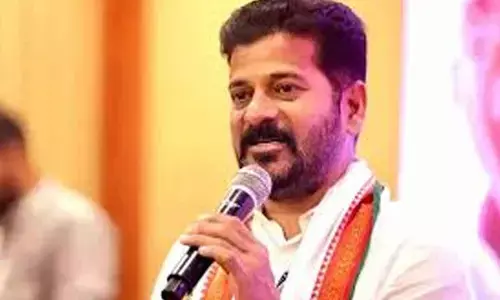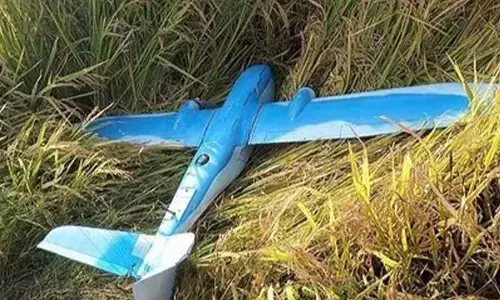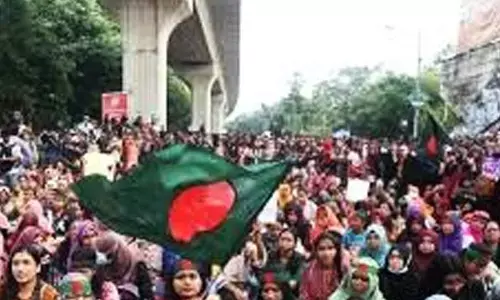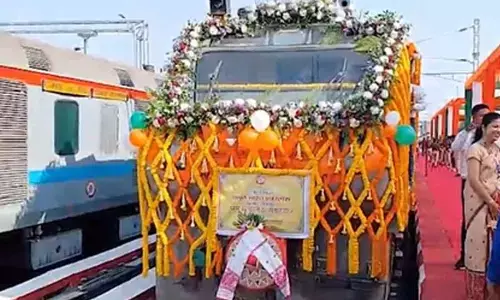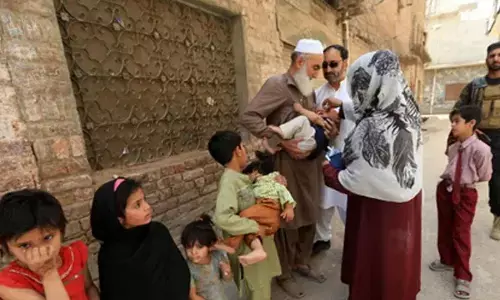Reminiscence of Quit India Movement
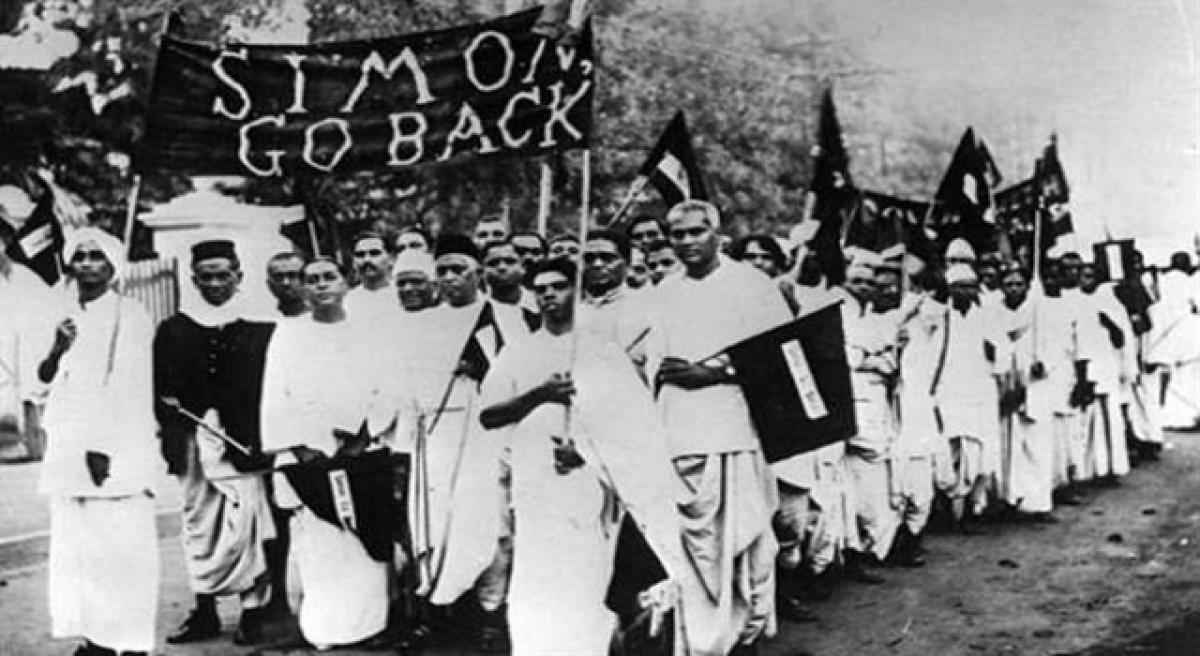
In July 1942, the Congress Working Committee met at Wardha. Here a long resolution was passed that demanded that the “British Rule in India must end immediately”.
In July 1942, the Congress Working Committee met at Wardha. Here a long resolution was passed that demanded that the “British Rule in India must end immediately”.
This resolution was an outcome of the change in attitude of Congress and Gandhi himself towards British.
The attitude changed because in the Second World War the Japanese were triumphing and they had already overrun Singapore and Malaya. They were nearly reaching Burma and India. So it was thought that “Presence of British in India was an invitation to Japan to invade”.
The Wardha Resolution is also known as “Quit India Resolution”. This resolution was ratified in the All India Congress Committee at Bombay on August 7, 1942. Here a nonviolent mass struggle under the leadership of Gandhi was sanctioned in the “August Kranti Maidan”.
In case if the Gandhi and congress leaders were arrested, the document said:
“Every Indian who desires freedom and strives for it must be his own guide urging him or her on a long hard road where there is no resting place and which leads ultimately to the independence of India”
After that , Gandhi made the following statements in his speech” Every one of you should from this moment onwards consider yourself freeman or woman and act as if you were free……I am not going to be satisfied with anything short of freedom. You should do or die. We shall either free India or die in the attempt”.
This movement attracted the common people of India.
After the above sanction, the AICC meeting ended on the midnight of 8 August 1942. The same night police arrested Mahatma Gandhi, Maulana Abul Kalam Aazad and all other leaders. Within a week, almost all the leaders of Congress were in jail.
From August 9 to August 13, there was widespread disturbance in Bombay, Ahamadabad, Poona, and Delhi. However, after that the movement started deteriorating. It was followed by widespread hartals, strikes and other outbreaks. All of them are commonly called the “Great August Uprising”.
Was the Great August Uprising inevitable?
Yes. It is seen in the above discussion that the immediate cause of QIM was the failure of Cripps mission. It was realised that any further silence would be tantamount to accept the right of the British government to decide India’s fate without any reference to the wishes of her people. That was also a time of a rising inflation and the acute shortage of food stuff.
The World War created problems for the common people and as soon as the news of allied reverses and British withdrawals from south-east Asia and Burma came, the people started looking for opportunity to express their discontent.
By the end of the year, the movement had been suppressed due to ruthless use of force. For next two and half years, there was no large political movement.
Was the Quit India Movement a natural corollary of the prolonged struggle for the independence?
Partially Yes, In fact, Quit India Movement was a natural corollary of the failure of the Cripps Mission. Various reasons given for the outbreak of the Quit India Movement are as follows
1. Gandhi was desperate and wanted to call for “do-or-die” after the failure of the individual Satyagraha.
2. Failure & Rejection of the Cripps Proposals
3. There was a general demoralisation of the Congress leaders.
4. There was a growing demand for separate land among the Muslim League.
5. There was a presence of large number of troops in India.
6. There was also a feeling that Indians would do the same with British as the people in Singapore, Malaya and Burma did.
Did Quit India Movement prove to be a metaphor?
Indian movement represented a metaphor because it was
1. Not a Non-violent Movement
2. Not led by Gandhi
3. Not Planned
Basically, Gandhi did not formulate any definite programme of action before he was arrested on 9th August. The violent acts in the 1942 movement were not of its original character, and the QIM movement in 1942 shortly merged itself into the revolutionary or terrorist movement. One of the powerful sections of Congress led by Jaya Prakash Narayan openly repudiated the policy of Gandhi.
There were sporadic events of violence in all parts of India and the leaders preached the cult of violence and mass revolution. The revolutionary movement and the non-violent satyagraha launched by Gandhi, both came to an end, almost simultaneously, without achieving freedom.
The movement was not spontaneous because it ultimately represented it was a by product of a combination of trends underlying at varying degrees to produce independence, at that time.
Further, the communists had opposed this movement and it virtually damaged the labour movement also. Labour unions under communist influence had apparently decided against participation in the movement, there were large-scale strikes in mills at Kanpur, Jamshedpur and Ahmadabad. There was an indifference in the labour class
Subhash Chandra Bose: In Germany
In 1941, When Netaji left India in disguise and reached Germany, he was welcomed by Joachim von Ribbentrop, Foreign Minister of Germany from 1938 until 1945, and right hand of Adolf Hitler.
In Berlin, Subhash established free India centre and raised a unit of Indian prisoners of War in Germany.He frequently used the Berlin Radio and broadcasted is cause for India. It was called Azad Hind Radio. The headquarters of Azad Hind Radio was later shifted to Singapore and later Rangoon.
On this Radio, Netaji referred the British Broadcasting Corporation as the Bluff and Bluster Corporation and the All India Radio as the Anti Indian Radio.
He used the greeting “Jai Hind” and the public greeted him in return with the same. However, in East, the outbreak of war was giving a new dimension to the efforts of Subhash to throw out the British.
Tokyo Conference: March, 1942
By this time, Ras Bihari Bose had established himself in East and in March 1942, he convened a conference in Tokyo. The outcome of this conference was the new face of “Indian Independence League”, the organisation which was originally founded in 1928, by Rash Bihari Bose and Jawaharlal Nehru.
The decision was taken to form the Indian National Army for the liberation of India. A Council of action was created and Ras Bihari Bose became its president. Mohan Singh was the commander in chief of the proposed Indian National Army. However, Mohan Singh was later arrested.
But the Indians had difference with Ras Bihari’s idea of Indian liberation with the Japanese help and were actually worried about the vested Japanese interests. The result was that nothing substantial came out and the conference agreed to meet again in Bangkok at some future date. In April 1942, Ras Bihari and the Indian delegation returned to Singapore
All Malayan Indian Independence League: 1942, Singapore
In Singapore, Ras Bihari Bose arranged a conference to make All Malayan Indian Independence League.
The president of this league was Nedyam Raghavan, a Penang Barrister and a prominent Malayan Indian.
Again this league made a number of proposals including the creation of a Council of Action. The league got overwhelming support and by August 1942 one lakh people became its members. The league took up the issue of the local Indian population which was mainly engaged in plantations.
Bangkok Conference : June 1942
As decided in the Tokyo conference, the Bangkok conference was held and here the Indian Independence League was again constituted.
Rash Bihari Bose was to chair the council, while KPK Menon, Nedyam Raghavan were among the civilian members of the council. Mohan Singh was to be the INA’s members. A 34 point resolution was passed by which the Indian National Army was made subordinate to the Indian Independence League.
The resolution expected the Japanese government to respond to each point. This resolution said that the Japanese Government should clearly, explicitly and publicly recognise India as an independent nation.
It also demanded that the Japanese Government should recognise the league as the nation’s representatives and guardians.
The resolution demanded assurances from the Japanese Government on Free India’s relation with Japan, respect for her sovereignty and her territorial integrity.
The resolution further demanded that the Indian National Army should be accorded the status of an allied army and be treated as such, and that all Indian prisoners of wars be released to the INA.
Arrival of Bose in Japan 1943
Prior to this conference, an invitation was sent to Subhash Chandra Bose to come to East Asia. After a three-month journey by submarine, and a short stop in Singapore, he reached Tokyo on 11 May 1943, and here, he could get the promise of authorities of Japan to extend all the help to him to expel the British from India and enable India to achieve independence.
The Indian National Army was initially formed under Capt Mohan Singh Deb with Japanese aid and support after the fall of Singapore and consisted of approximately 20,000 Indian prisoners of war who were captured either during the Malayan campaign or surrendered at Singapore.
Mohan Singh Deb had differences with Japanese authorities. The Japanese too were frustrated with him.
On 29 December 1942, General Mohan Singh Deb was removed from his command and taken into custody by the Japanese military police. Later, after the war, he was given to the British authorities, which repatriated him to India to face the INA trails.
He was not given any punishment as such and later he became a Rajya Sabha MP when India was ruled by the Congress Government!
On 15 February 1943, the Army was put under the command of Lt. Col. M.Z. Kiani. He revived the former ranks and badges.
In July 1943 Subhash went to Singapore and here, he was given the premiership of the Indian Independence League. When in 1943, Subhash took over the command of the Indian National Army, it was almost zenith of his career.
At this juncture of time, an Officers’ Training School for INA officers was opened under Habib ur Rahman.
Azad School for the civilian volunteers were set up to provide training to the recruits.
For the first time in Asia a women’s regiment, the Rani of Jhansi regiment was raised as a combat force, under Captain Laxmi Swaminathan.
Provisional Government of Free India, Singapore, October 1943
On 21st October 1943, Subhash set up the Provisional Government of Free India in Singapore. The INA took half a year for its preparation to march to India. In March 1944, the INA commenced its military campaign with the battle cry of Subhash “Dilli Chalo” against Burma and the columns of the army reached Kohima and laid siege of Imphal. The provisional Government of India was recognised by Japan, Germany, Italy, Croatia, Burma, Thailand, Nationalist China, Philippines etc. This provisional Government was given Andaman and Nicobar Islands by the Japanese which had occupied them earlier.
The two islands were renamed by Subhash as Shaheed (Martyr) & Swaraj (Self-rule).Here on December 30, 1943 Subhash Chandra Bose first raised the flag of Indian independence.
From March to July 1944, the Japanese armies along with INA attempted to destroy the Allied forces at Imphal and invade India. This was known as Battle of Imphal. Here, the Japanese forces were driven back into Burma with heavy losses. INA also lost lots of men and material. There was another Battle of Kohima going on simultaneously in which the INA and Japanese forces unsuccessfully encircled Allied forces.
But the fate changed soon after. Japan suffered the biggest defeat in this part of the world. In May 1945, Rangoon was recaptured by British. On August 6, 1945 and August 9, 1945, two atom bombs were dropped over Hiroshima and Nagasaki and in the next month, Japan surrendered.
At the time of surrender of Japan, in September 1945, Bose left for Manchuria to attempt to contact the advancing Soviet troops. But here, he was toppled by the forces of history.
End of INA and INA Trials (Red Fort Trials) 1946
Ras Bihari Bose had died in January 1945 in Tokyo. Subhash Chandra Bose was also presumed to have died. Before the war ended, the INA soldiers started falling into the hands of the allies. These were taken as prisoners of wars and the court martial began as early as 1943.
INA had around 43000 recruits out of which many perished, many fled and mixed with the civilians, but 16000 were captured. They were stuffed into the ships and sent to India via Rangoon. Various detention camps had been organised in Jhingergacha and Nilganj near Calcutta, Kirkee near Pune, Attock, Multan and at Bahadurgarh near Delhi.
The officers of the INA were taken to court martial at the Red Fort of Delhi from November 1945 and May 1946. Around ten courts-martial were held.
The first of these was the joint court-martial of Colonel Prem Sahgal, Colonel Gurubaksh Singh Dhillon and Major General Shah Nawaz Khan, who had been taken Prisioners of Wars in Singapore.
They were charged of “Waging War against the King Emperor” as well as Murder and abetment of Murder.
The Indian National Congress and the Muslim League both made the release of the three defendants, one Hindu, One Muslim and One Sikh.
They were sentenced to death, but under pressure from the political parties from India, Army Chief Claude Auchinleck was forced to commute the sentences of the three defendants in the first trial.


